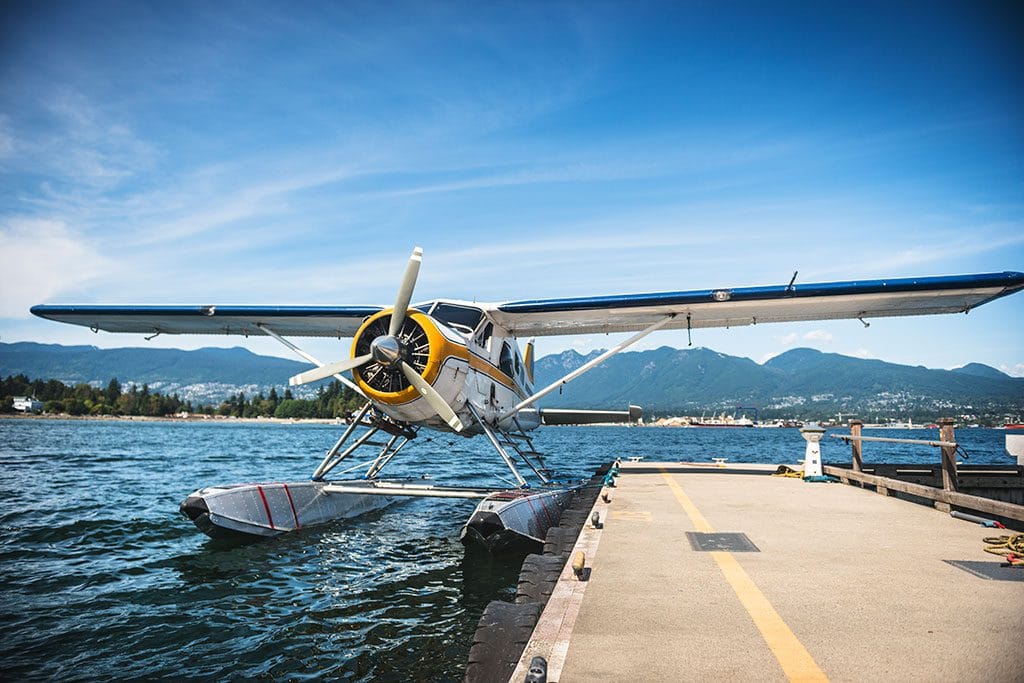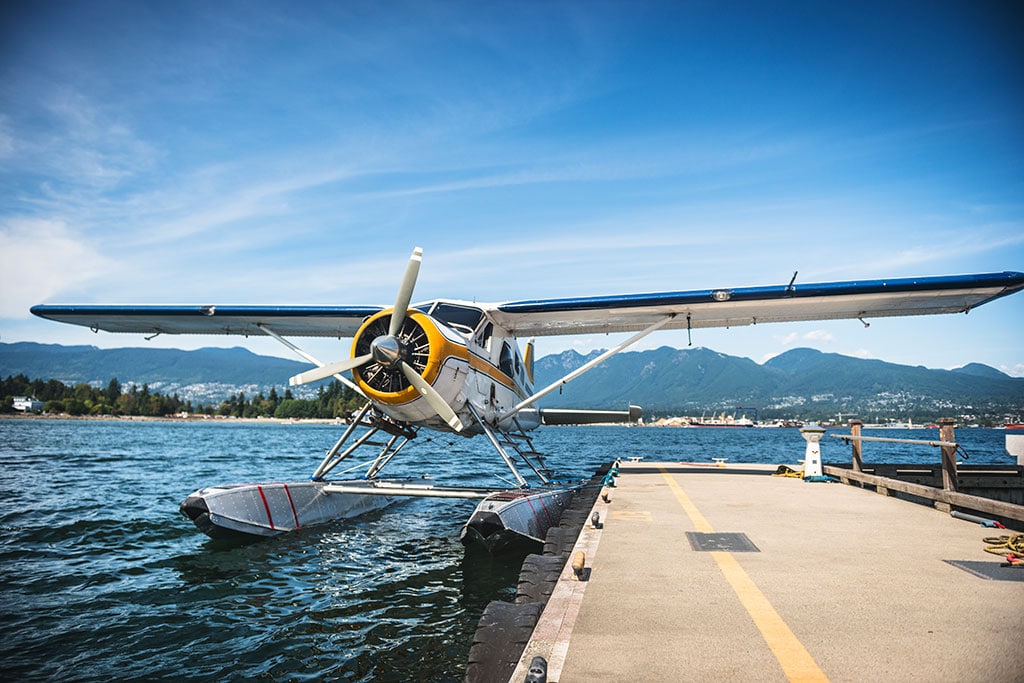As any seaplane pilot will tell you, flying seaplanes provides a tremendous sense of freedom. In areas with numerous bodies of water, the fact that you can land on and take off from any of them where those activities aren’t prohibited gives you many options. Seaplane pilots relish the fact that 70 percent of the planet is covered by water!
Of course, seaplanes, like all aircraft, should be covered by adequate seaplane aircraft liability insurance in order to protect the pilot, passengers, property, and bystanders. So, it is important that pilots have a good understanding of what seaplane insurance is and that they secure the proper coverage before they ever get into the cockpit.

What is a Seaplane?
For those not (or not yet) involved with seaplanes, a brief description may be helpful. In general, seaplanes are aircraft that have the ability to land on water. This may mean the sea or ocean, but often means lakes, ponds, reservoirs, rivers, or other inland bodies of water large enough to accommodate landing and takeoff.
There are two primary types of seaplanes: floatplanes and flying boats.
- A floatplane has pontoons, or floats, mounted under the fuselage. The most common configuration utilizes two floats, one on each side of the fuselage mounted slightly wider than the body of the aircraft. However, other configurations are sometimes used. The floats, in addition to providing the ability to land on water, increase the weight of the aircraft and the drag it produces. This typically results in slower rate of climb, lower cruise speed and a reduced payload.
Floatplanes may have retractable wheels. This gives them the ability to take off from and land on an airstrip in addition to their water takeoff and landing capabilities. This type of floatplane is called an amphibian or an amphibious floatplane.
- A flying boat has a fuselage that is shaped like a ship’s hull, which allows for water operations and is its primary source of buoyancy. Most flying boats also have small floats mounted near the wingtips to provide added stability on the water. Most larger water-capable aircraft are flying boats, since the boat-like hull can support more weight. Some flying boats also incorporate wheeled landing gear, making them amphibians as well.
What Does Seaplane Insurance Cover?
Similar to other aviation insurance, seaplane insurance usually covers the aircraft hull and the legal liabilities arising from its ownership, maintenance or use. One advantage of seaplane aviation insurance policies from Global Aerospace is that they are all encompassing. This means that if, for example, an airplane is equipped with floats three months of the year and on wheels the remainder, no policy changes are necessary when switching from one to the other.
What Does a Seaplane Insurance Provider Look for in Determining Insurability?
There are certain key considerations for seaplane insurance providers as they decide on how or whether to cover a pilot. Most importantly, they look for:
- Seaplane experience. Insurers like to see a significant amount of time piloting the make and model for which they are seeking coverage.
- Initial and ongoing training. Water operations involve a number of variables not associated with landing on a runway. Consequently, it is critical that seaplane pilots get the necessary initial training and certification. And, because seaplane operation can be seasonal, it is important that pilots get refresher training as needed.
- Environmental factors. Where will the seaplane be used? Are there environmental challenges like mountains near the usual landing sites? Are salt water operations contemplated?
- Safety focus. Is the pilot a member of organizations like the Seaplane Pilots Association? Do they attend “splash-ins” and other industry events where safety is promoted with educational sessions and demonstrations?
Key Terms Related to Seaplane Aircraft Insurance
If you are new to flying seaplanes, here are some terms you will encounter in your training and also possibly when talking with your seaplane insurance provider about obtaining coverage:
AMSL – Above Mean Sea Level
CFIT – Controlled Flight Into Terrain
DA – Decision Altitude
DH – Decision Height
DSTRK – Desired Track
ELT – Emergency Locator Transmitter
ICAO – International Civil Aviation Organization
IFR – Instrument Flight Rules
ILS – Instrument Landing System
MAPt – Missed Approach Point
MOC – Minimum Obstacle Clearance
MOCA – Minimum Obstacle Clearance Altitude
SA – Situational Awareness
STC – Supplemental Type Certificate
TAS – True Air Speed
TAWS – Terrain Awareness Warning System
TCAS – Traffic Alert and Collision Avoidance System
TDP – Take-off Decision Point
TDZ – Touchdown Zone
Be Confident in Your Seaplane Aviation Insurance Coverage
As you take off on your next adventure, be sure you have the right seaplane insurance coverage. To find out about our seaplane insurance policies, please call or email us at your convenience.

